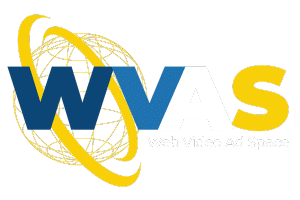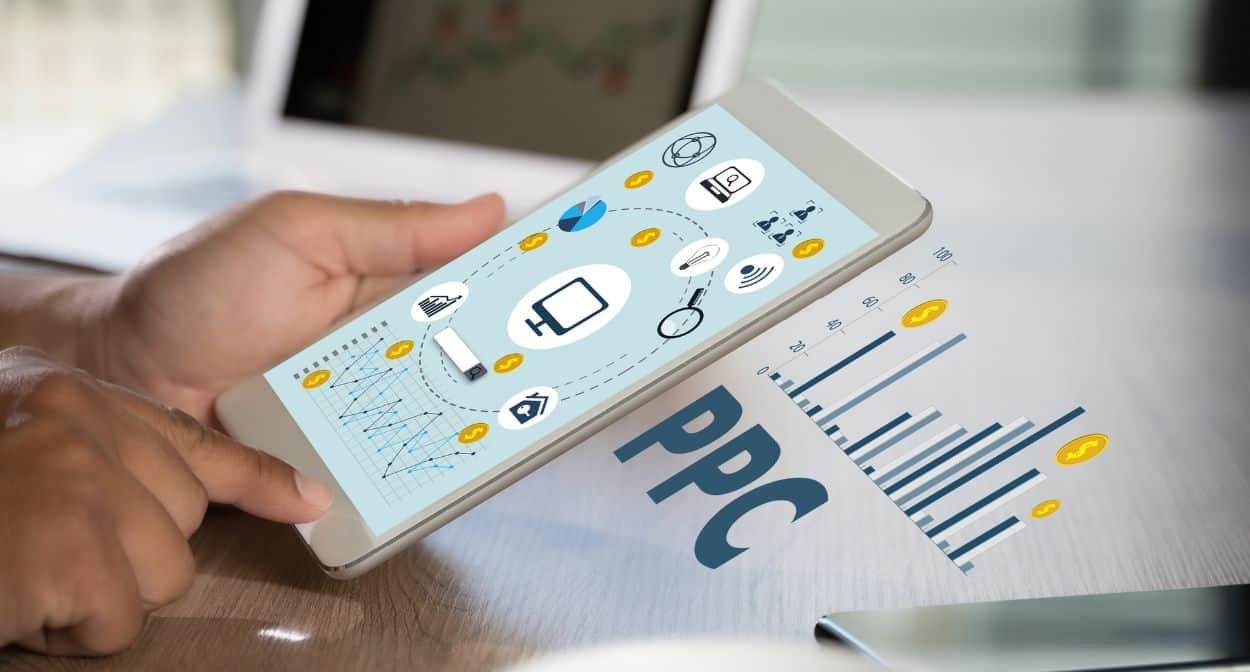Their competitors, seemingly less qualified, were drawing in more clients. What made the difference?
It was the power of well-crafted PPC (Pay-Per-Click) ads.
One of their competitors had mastered the art of PPC, targeting local car owners with precision, showcasing special offers, and highlighting their unique services.
The results?
A significant increase in leads, calls, and, most importantly, a steady flow of customers driving into their service bays.
This story isn’t just a hypothetical scenario; it’s a reality for businesses that harness the potential of PPC advertising, a game-changer in the digital marketing realm, especially for Automotive Service & Repair Businesses.
1. Mastering Keyword Targeting

Just as a skilled mechanic knows the intricacies of a car, understanding the nuances of keyword targeting can drive your business to the top of search results, bringing customers straight to your garage door.
Geo-targeting: Localizing Your Reach
Geo-targeting is about tapping into local search trends. By including location-specific keywords like “Houston oil change” or “car repair near me,” you’re effectively placing your business on the local map.
Local SEO tools like Moz Local or SEMrush can offer invaluable insights into location-based keyword performance.
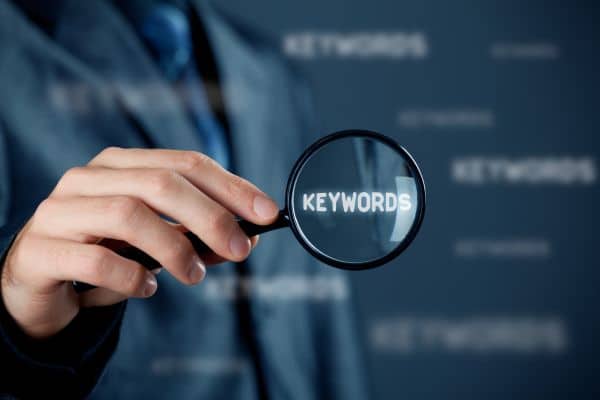
Service-specific Keywords: Capturing High Intent Searches
Customers often search with a specific need in mind. For instance, “brake repair estimate” indicates a user ready for service, making these keywords a goldmine.
According to a study by Ahrefs, specific service-related queries have a higher conversion rate due to their transactional nature.
Incorporating these into your strategy ensures you’re not just attracting traffic, but traffic that converts.

The Art of Negative Keywords: Filtering Out the Irrelevant
Not all traffic is good traffic. Negative keywords help you exclude searches like “used car parts” or “DIY car repair tutorials,” which are irrelevant to your services.
Google Ads offers a comprehensive way to implement these filters, ensuring your ad spend isn’t wasted on unqualified leads.
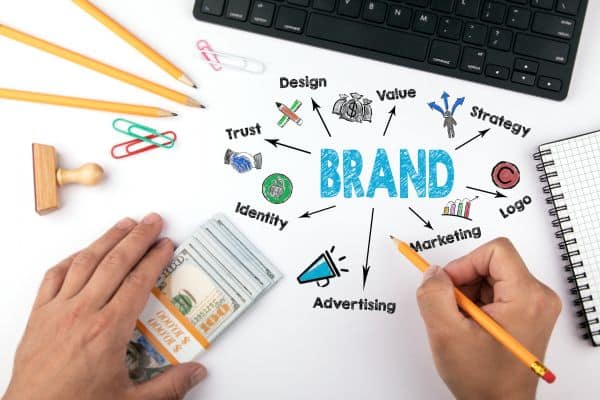
Brand Keywords: Safeguarding Your Territory
Bidding on your own brand name might seem counterintuitive, but it’s a strategic move. This tactic prevents competitors from capitalizing on your brand’s reputation and helps you own your branded search space.
Data from Google’s Economic Impact Report reveals that branded keywords have higher click-through rates as they leverage existing customer trust.
Long-tail Keywords: The Underutilized Secret Weapon
Long-tail keywords are the hidden gems of keyword targeting.
Phrases like “affordable hybrid car maintenance in [city name]” may have lower search volumes, but they have higher conversion rates.
Mastering keyword targeting is like fine-tuning a car’s engine. It requires skill, understanding, and a bit of creativity.
By leveraging geo-targeting, focusing on service-specific keywords, wisely using negative keywords, protecting your brand space, and exploring the potential of long-tail keywords, you can steer your auto service business towards the fast lane of online visibility and customer acquisition.
2. Structuring Your PPC Campaign for Maximum Impact
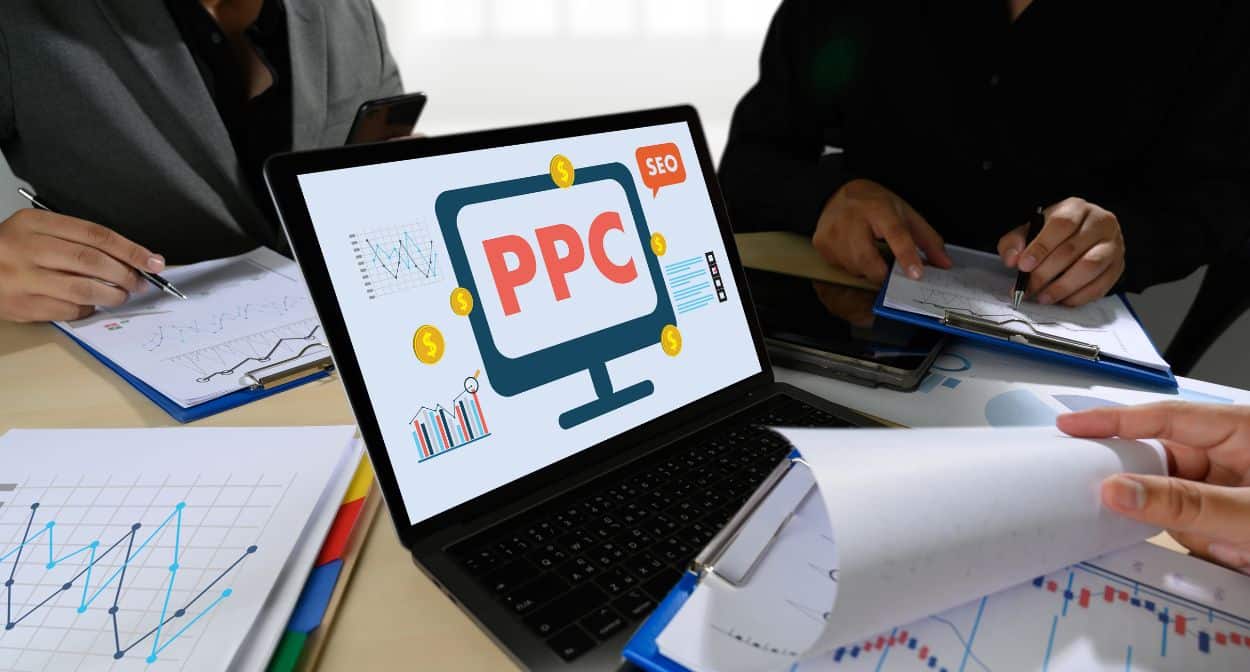
In the digital world of auto services, a well-structured campaign is your ace mechanic, ensuring each ad reaches the right customer at the right time.
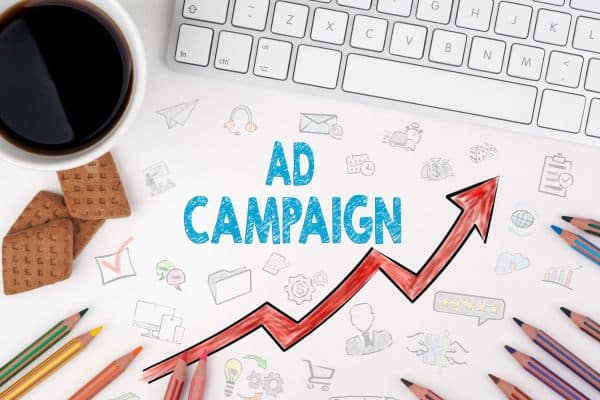
The Power of Separate Campaigns: Specialization is Key
Dividing your digital marketing efforts into separate campaigns based on service categories (like oil changes, brakes, engine repairs) is not just organization – it’s strategic.
Google’s own best practices suggest that this approach can increase click-through rates by making ads more relevant to user searches.
Additionally, if you have multiple locations, creating location-specific campaigns can significantly boost local engagement. Think of it as having a dedicated team for each service or location, just like in your garage.
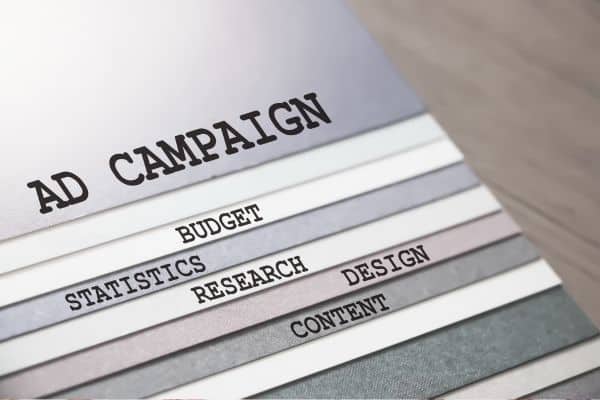
Ad Groups: The Heart of Your Campaigns
Within each campaign, ad groups act as the specialized teams. For example, in your “Oil Change” campaign, different ad groups could target “oil change prices” or “oil change coupons.”
This categorization ensures your ads are finely targeted.
A study by WordStream found that using highly relevant ad groups can improve your Quality Score, which can lower your cost per click and improve ad positioning.
Responsive Search Ads: The New Era of Flexibility
Responsive search ads are like the versatile mechanics who can adapt to any task.
By inputting multiple headlines and descriptions, Google’s AI automatically tests and learns which combinations perform best, as per Google’s recommendations.
This dynamic approach, as reported by Search Engine Land, can increase conversions by 10% compared to traditional search ads.
Just as a well-organized garage runs smoothly and keeps customers coming back, a well-structured digital ad campaign can drive more traffic to your business and increase conversions.
By dividing campaigns by service or location, creating focused ad groups, and embracing the adaptability of responsive search ads, you’re not just advertising – you’re creating a digital ecosystem tailored to your auto service business.
3. PPC Ad Copywriting Secrets for Auto Service Businesses

Let’s dive into the art of crafting ad copy that not only gets noticed but also drives customers to your auto service business.
Focus on Benefits: More Than Just a Service
Your ad should do more than list your services; it should highlight the benefits that set you apart.
Whether it’s your lightning-fast service, comprehensive warranties, no-cost estimates, or your exceptionally friendly staff, your ad copy should answer the customer’s question: “What’s in it for me?”

Strong Calls to Action: The Engine of Your Ad
A compelling call to action (CTA) is the turbocharger of your ad copy. Phrases like “Get a free quote now,” “Book your appointment today,” or “Available 24/7 for emergencies” create urgency and guide the customer on what to do next.

Mobile-Friendly: The Fast Lane of Today’s Advertising
With over 60% of searches now done on mobile devices, as reported by Statista, your ad copy must be as effective on a small screen as it is on a desktop.
This means being concise, clear, and straight to the point. Mobile users are on the go, so your message needs to be quick and easy to understand.
Local Extensions: Your Digital Storefront
Local extensions like your address, phone number, and a link to a map are like a digital storefront for your business.
Google has found that ads with location extensions have a higher click-through rate.
These extensions provide essential information and make it easier for local customers to find and contact you.
Promotions and Offers: The Irresistible Hook
Everyone loves a good deal, and highlighting promotions or special offers can be the hook that draws customers in.
Whether it’s a discount on services or a limited-time offer, these specials can create a sense of urgency and attract immediate attention.
Data from RetailMeNot indicates that offers and discounts are major motivators in purchasing decisions.
Crafting the perfect ad copy is like tuning a car to peak performance.
It’s about blending the right elements – from showcasing benefits and using strong CTAs to being mobile-friendly, utilizing local extensions, and offering irresistible deals.
With these techniques, you can turn your digital ads into powerful tools that not only catch the eye but also drive action.
4. Apply the Art of Landing Page Optimization

This immediate sense of direction and comfort significantly increases the chance they’ll choose your service.
Now, translate this scenario to your online presence.
Your landing page is your digital shopfront, and its optimization is crucial in turning visitors into customers.
Let’s explore how to turbocharge your landing page, ensuring it not only attracts visitors but also converts them into loyal clients.
Relevance is Key: Aligning Ad and Page
The journey from ad to landing page should be seamless.
If your ad promises a “20% discount on first-time oil changes,” your landing page must deliver on that promise immediately.
Google’s research indicates that a strong message match between ad and landing page can increase conversions by up to 50%.
This alignment keeps the user’s intent focused and avoids any confusion or disappointment.

Clarity in Value Proposition: Your Unique Selling Points
Your landing page should quickly and clearly communicate what sets you apart.
Whether it’s your state-of-the-art equipment, experienced mechanics, or unbeatable prices, these unique selling points need to be front and center.
According to Unbounce, pages with a clear value proposition can see improvement in conversion rates by over 10%.
Make sure your visitors know why they should choose you within seconds of arriving on your page.

Call to Action: The Conversion Catalyst
A strong, visible call to action (CTA) is the gateway to converting a visitor into a customer.
Be it “Book Now,” “Get a Free Quote,” or “Contact Us Today,” your CTA should be prominent and compelling.
Eye-tracking studies by Nielsen Norman Group show that users focus on CTAs that stand out and are placed strategically.

Mobile-Responsive: Catering to the On-the-Go User
With over 54% of global web traffic coming from mobile devices, as reported by StatCounter, a mobile-responsive design is non-negotiable.
Your landing page must provide a smooth experience across all devices.
Google states that mobile-friendly websites can see an increase in user engagement by up to 20%.
r in the module Content settings. You can also style every aspect of this content in the module Design settings and even apply custom CSS to this text in the module Advanced settings.
Speed Thrills: Fast Loading for Instant Gratification
Speed is everything. A slow-loading page is like a customer waiting too long to be served – they will leave.
According to Google’s “Speed Update,” page loading time is a ranking factor for mobile searches.
A delay of even one second can lead to a 20% drop in conversion, as per Akamai’s findings.
Optimizing your landing page is akin to fine-tuning a high-performance engine.
Every element, from relevancy and clarity to responsiveness and speed, plays a critical role in how effectively your page converts visitors into customers.
By focusing on these key aspects, you can ensure your landing page is not just a welcoming entry point but a powerful conversion machine.
5. Master Conversion Tracking and Optimization
Is it the billboard on Main Street, your social media ads, or word-of-mouth?
In the digital marketing world, this scenario translates to understanding the effectiveness of your online campaigns.
Just like a mechanic uses diagnostic tools to fine-tune an engine, conversion tracking and optimization tools can help fine-tune your marketing efforts.
Let’s delve into how these tools not only reveal what’s working but also turbocharge your future campaigns for maximum efficiency and return.
Track Calls and Online Leads: The Diagnostic Tools of Marketing
Every call and online inquiry is a potential customer.
Using call tracking numbers and conversion tracking tools gives you insights similar to a dashboard diagnostic test on a car.
Salesforce reports that high-performing marketing teams are 1.3 times more likely to use comprehensive tracking tools.
This data allows you to measure the impact of specific campaigns and channels, fine-tuning your marketing spend for the best ROI.

A/B Testing: The Dyno Test for Your Ads and Pages
Imagine testing two different engines on a dyno to see which performs better.
A/B testing serves the same purpose for your ad copy, landing pages, and CTAs.
By comparing different versions, you can determine which elements resonate most with your audience.
Google found that A/B testing can improve conversion rates by up to 300%, making it an invaluable tool in your optimization toolbox.

Bid Adjustments: Fine-Tuning for Peak Performance
In auto racing, the smallest adjustments can lead to significant performance improvements. Similarly, optimizing bids based on factors like location, device, time of day, and keyword performance can yield substantial gains.
According to WordStream, making bid adjustments based on these factors can increase click-through rates and reduce costs per conversion.
Remarketing: Bringing Back Lost Customers
Remarketing is like a follow-up service reminder – it brings back customers who showed interest but didn’t convert.
This tactic targets users who have previously interacted with your website or ads.
Criteo’s studies show that website visitors who are retargeted are 70% more likely to convert, making remarketing a powerful tool in closing the conversion loop.
Just as a well-tuned engine is crucial for a car’s performance, conversion tracking and optimization are essential for the success of your digital marketing campaigns.
By leveraging these strategies, you can gain deep insights into your campaign’s effectiveness, refine your marketing tactics, and drive more qualified leads to your auto service business.
Are you ready to shift gears and race towards higher conversions and better campaign performance?
PPC is an ongoing process. It requires constant monitoring, testing, and optimization to achieve maximum results. By implementing these strategies and adapting to your specific business needs and budget, you can attract high-quality leads and drive more calls to your local auto service and repair business.
Navigating the world of PPC advertising can be as intricate as diagnosing a car’s complex engine.
Just as you wouldn’t trust your vehicle with just any mechanic, your PPC campaign deserves the expertise of a seasoned professional.
If this exploration into the power of PPC for Auto Service and Repair Businesses has revved up your interest, it’s time to take the next step.
We invite you to speak with a PPC consultant, a specialist who can craft a tailored PPC campaign to boost your business’s online visibility and drive maximum leads and calls.
Don’t let your business idle in the slow lane of traditional marketing.
Accelerate into the fast lane with a strategic PPC approach.
Contact us today to discuss how we can turbocharge your Auto Service business with the precision and efficiency of a well-tuned PPC campaign.
